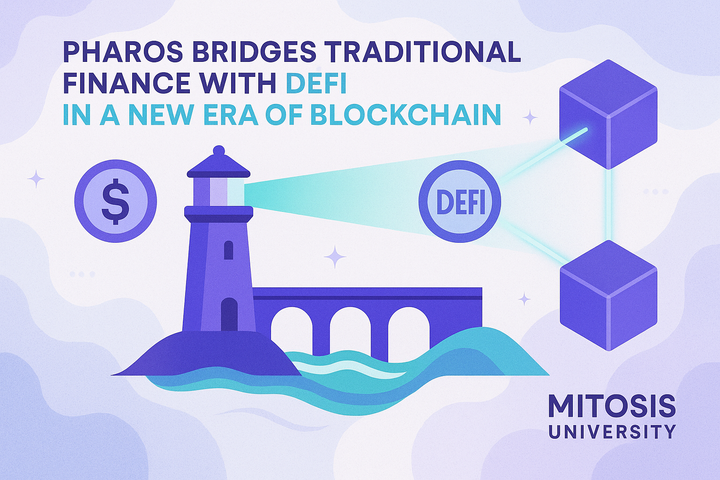Network Metadata: The Hidden Privacy Leak No One Talks About

Introduction
In blockchain circles, privacy is often equated with hiding transaction data. Users rely on mixers, privacy coins, and address reuse avoidance to shield the content of their transactions. But a subtler threat often goes unnoticed: network metadata. This includes your IP address, transaction broadcast timing, wallet interaction patterns, and more. These invisible traces can be far more revealing than the transaction data itself.
What Is Network Metadata?
Metadata is data about data. In blockchain networks, metadata could include:
- IP addresses are used when sending transactions.
- Timestamps of broadcast activity..
- Peer-to-peer routing paths.
- Wallet interaction logs.
- Repeated usage behavior and timing.
Unlike on-chain data, which is usually public by design, metadata is often invisible to the user yet accessible to third parties like ISPs, blockchain analytics firms, and surveillance nodes.
How Metadata Breaks Your Privacy
Even if you use privacy features to obscure your on-chain activity, metadata can deanonymize you. For example:
- Your IP address can be matched to your wallet address when you send a transaction.
- Consistent interaction patterns (like always using a DApp at 1 AM) can reveal habits or time zones.
- If you're the first to broadcast a transaction, a surveillance node can link it to your node.
Studies have shown that blockchain surveillance tools go beyond analyzing the chain itself. Companies like Chainalysis and government agencies often monitor network traffic to correlate transactions with IP addresses.
Real-World Leaks: MetaMask and Infura
A perfect example of this happened in 2022 when it was revealed that MetaMask (via Infura, its default RPC provider) was logging user IP addresses along with wallet addresses. This meant anyone using MetaMask without custom settings was leaking a key metadata pair: "who they were" and "what they did."
Such logging, even when unintended, creates a surveillance-friendly environment. Even if your wallet has never reused an address or exposed amounts, the backend service could still tie your wallet to your internet identity.
Wallet Interaction Patterns
Wallet apps and dApps often interact with third-party services to fetch balances, submit transactions, and more. Many of these services are centralized and see your IP address and wallet address.
Moreover, your behavioral patterns, such as login times, DApps visited, and transaction frequency, can be used to build a behavioral profile. Over time, these patterns can link multiple addresses or expose usage habits that hint at your identity.
Bitcoin, Ethereum, and Network-Level Weaknesses
Bitcoin and Ethereum don't protect against metadata leaks by default. Both networks use peer-to-peer (P2P) architectures where transactions are gossiped between nodes. A well-placed surveillance node can monitor this activity and determine where a transaction originated.
In Bitcoin, an adversary can observe transaction propagation times across different nodes. If a transaction appears at Node A before anywhere else, there's a good chance that Node A is the origin. Even if Bitcoin uses some random delays to confuse this analysis, advanced adversaries (like nation-states) can overcome these protections.
Ethereum, being heavily dependent on RPC providers like Infura and Alchemy, poses a different challenge. These providers become chokepoints for metadata collection unless users manually configure privacy-respecting nodes.
VPNs and Tor: Helpful but Limited
To hide your IP address, many users turn to VPNs or Tor. Both offer some protection, but with limitations:
- VPNs mask your IP but consolidate trust in a single provider. If the VPN logs traffic or gets subpoenaed, your data is exposed.
- Tor adds more layers via onion routing. However, if an attacker can monitor both ends (entry and exit nodes), correlation attacks are possible.
Mixnets: Fighting Metadata at the Root
Mixnets are the most advanced solution for network-level privacy. A mixnet randomly delays and reorders packets from different users, blending them to make metadata analysis nearly impossible. Unlike VPNs or Tor, mixnets provide:
- Per-packet mixing: Each data packet takes a different path.
- Cover traffic: Fake data is introduced to obscure real usage.
- Resistant to global adversaries: Designed to survive correlation and timing attacks.
The Nym Network is a modern mixnet built for Web3. It uses token incentives for node operators and integrates with existing apps.
Privacy Coins Still Need Metadata Protection
Coins like Monero and Zcash obscure transaction details on-chain. However, if users send their transactions from a node tied to their IP, they’re still vulnerable.
Zcash developers have acknowledged that network-level privacy is essential for full anonymity. Monero implemented Dandelion++ to delay transaction broadcasts, adding some protection. But without routing traffic through anonymizing layers, even privacy coins leak metadata.
How to Protect Yourself
For general users, here are a few steps to safeguard your metadata:
- Use wallets with Tor integration (e.g., Wasabi Wallet).
- Manually configure RPC settings to use privacy-respecting nodes.
- Avoid linking your real IP to wallet activities.
- Use mixnet-enabled services where available.
- Be cautious about DApps that log interaction data.
For example, Nym is working on wallet plugins that automatically route your transactions through their mixnet.
Conclusion
Network metadata is a silent threat to blockchain privacy. Even when transactions are hidden on-chain, the surrounding behavioral and network traces can betray a user’s identity. IP addresses, routing paths, timestamps, and wallet usage patterns are often enough to build a profile.
Tools like VPNs and Tor offer partial shields, but mixnets like Nym represent the most robust answer to metadata surveillance. As privacy discussions in crypto evolve, more users and developers must pay attention to Layer-0 privacy, the network layer.
Because in the end, what you do matters, but how and from where you do it might matter even more.
References
- CoinLedger - Can cryptocurrency be traced?
- Decrypt – Infura Collecting MetaMask Users' IP, Ethereum Addresses After Privacy Policy Update
- Cointelegraph - Metadata is hurting Web3 privacy
- Bitcoin Magazine - Mixnets Are Needed for Privacy
- ProtonVPN - Are VPNs really anonymous?
- Tor Project - How Tor Works
- Nym - How Mixnets Work
- Panoramix - EU Research Project on Mixnets
- Zcash Community Forum - Network Privacy
- Wasabi Wallet - Privacy by Design
MITOSIS Official links:
GLOSSARY
Mitosis University
WEBSITE
X (Formerly Twitter)
DISCORD
DOCS



Comments ()